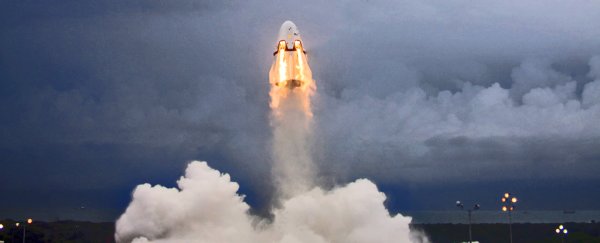NASA wants to stop relying on Russia to get American astronauts to the International Space Station (ISS). And little by little, SpaceX is making that happen.
Back in 2014, the US agreed to pay Elon Musk's aerospace company SpaceX US$2.6 billion for a spacecraft that could carry the nation's astronauts into orbit. It struck the same deal with Boeing, to the tune of U$4.2 billion.
Since then, both projects have repeatedly delayed their launch dates. But we might finally have some that are definite (or, you know, as definite as these things can be).
On Thursday, NASA announced that SpaceX's Crew Dragon (its spacecraft designed to transport astronauts) will be ready for an uncrewed test in November 2018 and a crewed test in April 2019.
Boeing's comparable CST-100 Starliner, meanwhile, will be ready for an uncrewed test in late 2018/early 2019 and a crewed test in mid-2019, according to NASA.
Following the crewed tests, each craft will undergo NASA's certification process. If those go well, the crafts can then achieve their primary purpose: transport US astronauts to the ISS.
This delayed time-frame isn't entirely unexpected.
In July, the Government Accounting Office (GAO), an independent agency that investigates federal spending for Congress, released a report predicting that SpaceX would complete its certification process in February 2020; Boeing is likely to wrap it up a month earlier.
So, these dates aren't surprising, but they also aren't good news.
NASA astronauts currently hitch rides to the ISS aboard Russia's Soyuz spacecraft, but that contract ends in November 2019.
That means NASA could find itself without any way to get astronauts to or from the ISS between November 2019 and whenever the SpaceX and Boeing craft are finally ready - that is, unless something happens to somehow move these launch dates up.
This article was originally published by Futurism. Read the original article.
